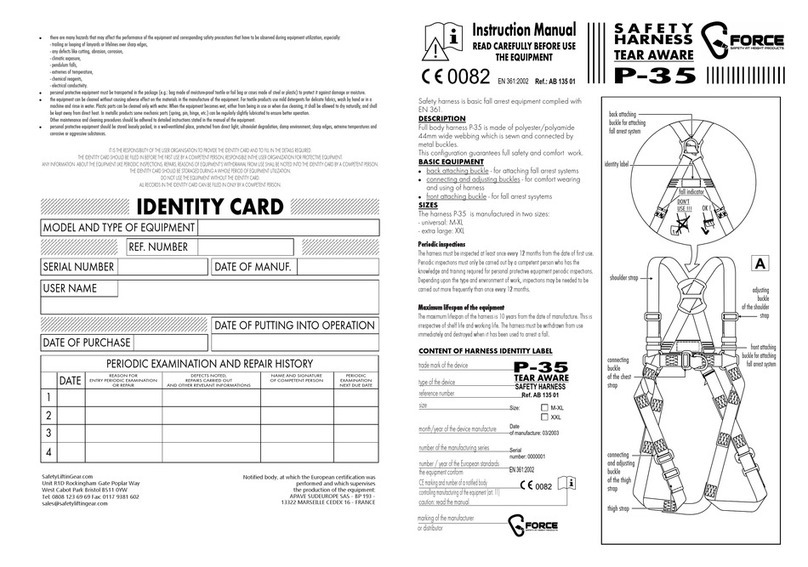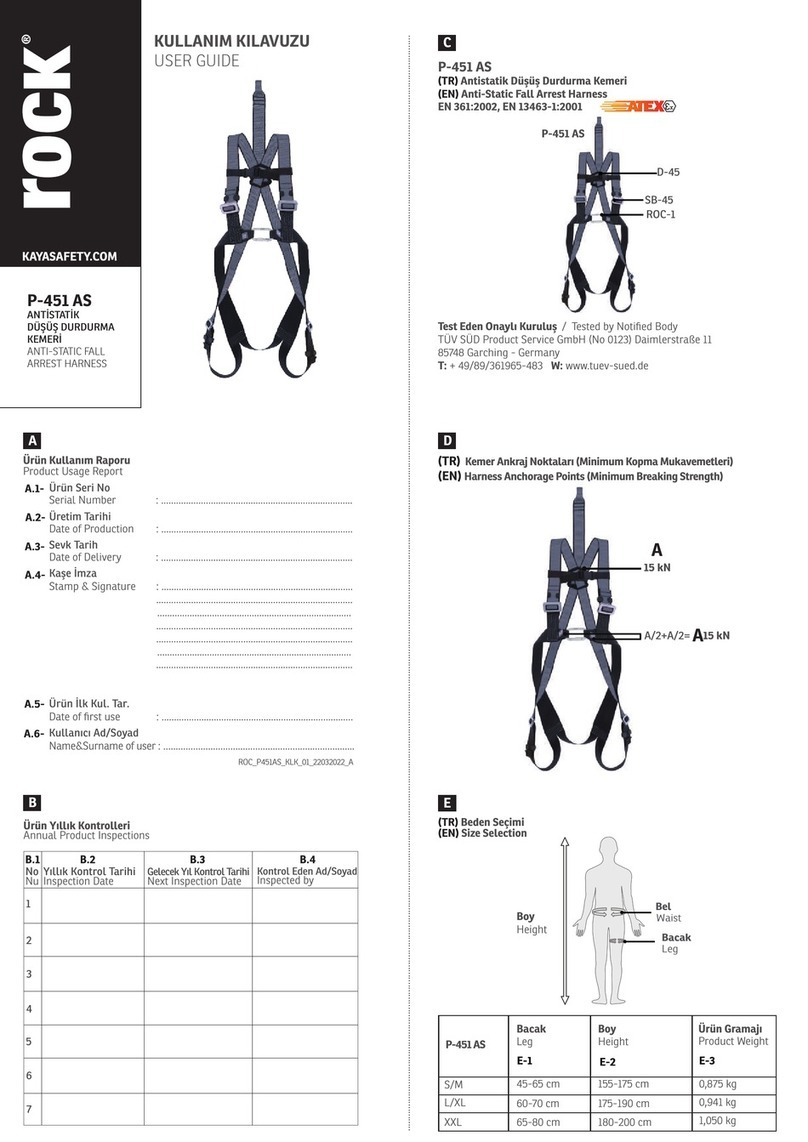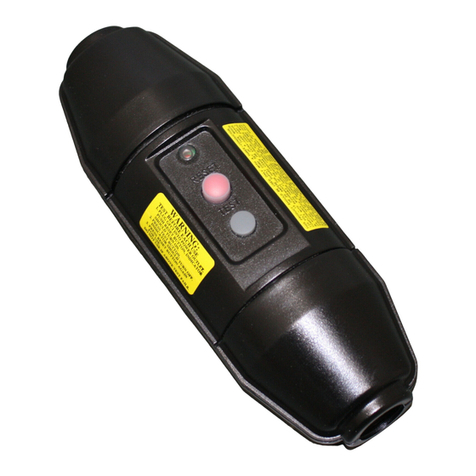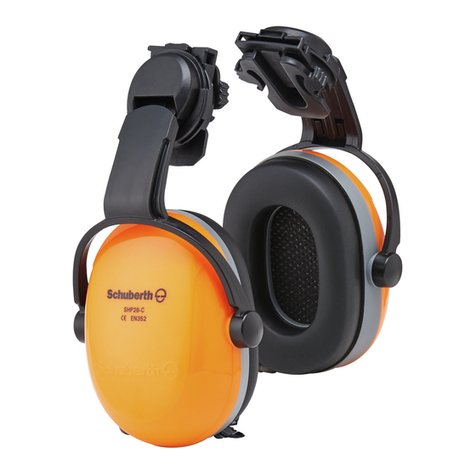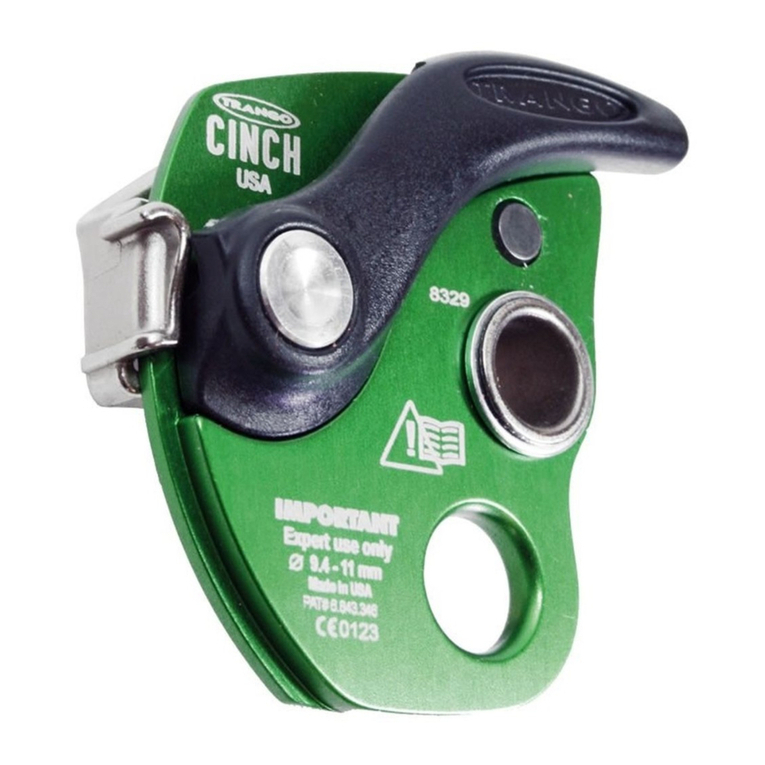
© Thomas & Betts (Australasia) Pty. Ltd. 2016 Rev: 3.0 22 February 2016 4
Complete Solutions in Emergency Lighting STANILITE Complete Solutions in Emergency Lighting STANILITE
© Thomas & Betts (Australasia) Pty. Ltd. 2016 Rev: 3.0 22 February 2016 1
Thomas & Betts (Australasia) Pty. Ltd. ABN: 062 074 810 898
Head Ofce: Unit D3, 3-29 Birnie Avenue, Lidcombe NSW 2141, Australia
Manufacturing: 23a Nyrang Street, Lidcombe NSW 2141, Australia
Phone: 1300 666 595 Fax: 1300 666 594 Email:
[email protected] Website: www
.tnbaust.com
GREETINGS
Congratulations on choosing to use this Thomas & Betts product covered by our unique Through-Life Support system. This document is
designed to assist you during the installation of this product; for the safety of yourself and others Thomas & Betts recommends
that you read this document thoroughly before commencing installation. The ttings are designed for easy
installation. They are advanced pieces of electronic equipment which, when treated with care and maintained through regular and
appropriate servicing, will perform reliably for many years to come.
SAFETY WARNING
In Australia and New Zealand, only licensed electricians are permitted by law to work with 240 Volt electrical installations.
Do not attempt to install or connect this product unless you are a licensed electrician.
Turn off and isolate the electrical supply before connecting this tting to the building wires.
Do not touch the terminals of the terminal block when the light tting is energised.
The only user-serviceable parts are uorescent or halogen lamp/s. LED light sources are not user-servicable.
Do not tamper with the tting or the warranty will be void.
As the installer, it is your responsibility to ensure compliance with all relevant building and safety codes, (ie: AS3000, AS/NZS2293).
Refer to the applicable standards for data and mains cabling installation procedures and requirements.
Important Note: This product is designed for indoor use only.
NEXUS LX (DATA CABLE SYSTEM)
The Nexus range of emergency light tting are designed to be connected together into a special communication network over a Level
4 (or higher) high speed, single twisted pair data cable. The Nexus LX User & Technical Guide describes all you need to know to
successfully install a Nexus project. Ask for it from your supervisor, from your employer or from your nearest Thomas & Betts product
supplier. The network cabling of the building must be installed as per the procedure detailed in the Nexus LX User & Technical Guide. No
mains or mains carrying cables are to be connected to the data terminals or cables.
NEXUS RF (WIRELESS SYSTEM)
The Nexus RF range of light ttings are designed to communicate via a proprietary RF network, however the electrical installation of the
ttings is identical to that of a standard non-monitored tting.
CONSTRUCTION SITES
Continuously switching of the mains power supply that is connected to emergency light ttings during the construction phase of an
installation will cause these ttings to discharge and charge their batteries many times over a short period; this can shorten the life of the
battery and will also result in shortened emergency lamp life for uorescent ttings. Thomas & Betts does not recommend such practices
and may not honour the warranty on batteries when they are subjected to such harsh operating conditions. Emergency light ttings are
designed to be discharge tested once every 6 months as per AS/NZS2293.2, subjecting the product to repeated discharge or charge
cycles is regarded as an abuse of the ttings.
TROUBLE SHOOTING GUIDE
If you have installed and connected the unit as per the instructions listed earlier and it does not function correctly, use the following table
as a guide to xing the problem. Look up the type of fault in the left column and check the possible causes from the right column.
If the unit still does not work after checking these possible causes, contact Thomas & Betts Service in Australia on 1300 666 595, Monday
to Friday, 8.30am to 4.30pm (AEST) and ask for help. Our trained service personnel will usually be able to take your call immediately and
assist you in resolving your difculty. Thomas & Betts is committed to providing valuable Through-Life Support for its products.
Doc No: 29-00129
LED Spitre Batten
Installation Manual
Standard, Nexus LX, Nexus RF
This Document Covers What’s Inside the box
Safety Warning LED Spitre Batten
Installation Instructions Installation Manual
Removal Instructions Warranty Information
Testing Precautions
Trouble Shooting Guide
# Fitting
Type
Fault Possible Causes
1 Standard
Nexus LX
Nexus RF
Lamp does not light up when connected to mains AC supply not connected or turned off; or
Switch active turned off; or
Lamp damaged or not inserted properly
2 Nexus LX LED is ashing green but AC lamp does not come
on when connected to mains
Switch active turned off; or
Lamp damaged or not inserted properly; or
Missing loop from unswitched to switched active
3 Nexus LX LED is ashing green but lamp does not come on
when test switch is pressed
Switch active turned off; or
Lamp damaged or not inserted properly; or
Battery pack not connected or faulty; or
Test switch damaged
4 Nexus LX LED does not light up red after the commissioning Battery pack not connected; or
LED wire not properly inserted into the terminal
5 Standard
Nexus LX
Nexus RF
Lamp is lit momentarily when test switch is pressed
or when mains fail
Battery not fully charged (allow up to 24 hours); or
Battery pack damaged
6 Nexus LX LED is constant green Unit self checks fail - return to manufacturer
7 Nexus LX
Nexus RF
Unit LED is not ashing yellow/orange under wink
node command
Unit is not receiving communication signal.
Check data cable wiring path and cable or RF
connections.
Refer to Nexus LX/RF User & Technical Guides.











